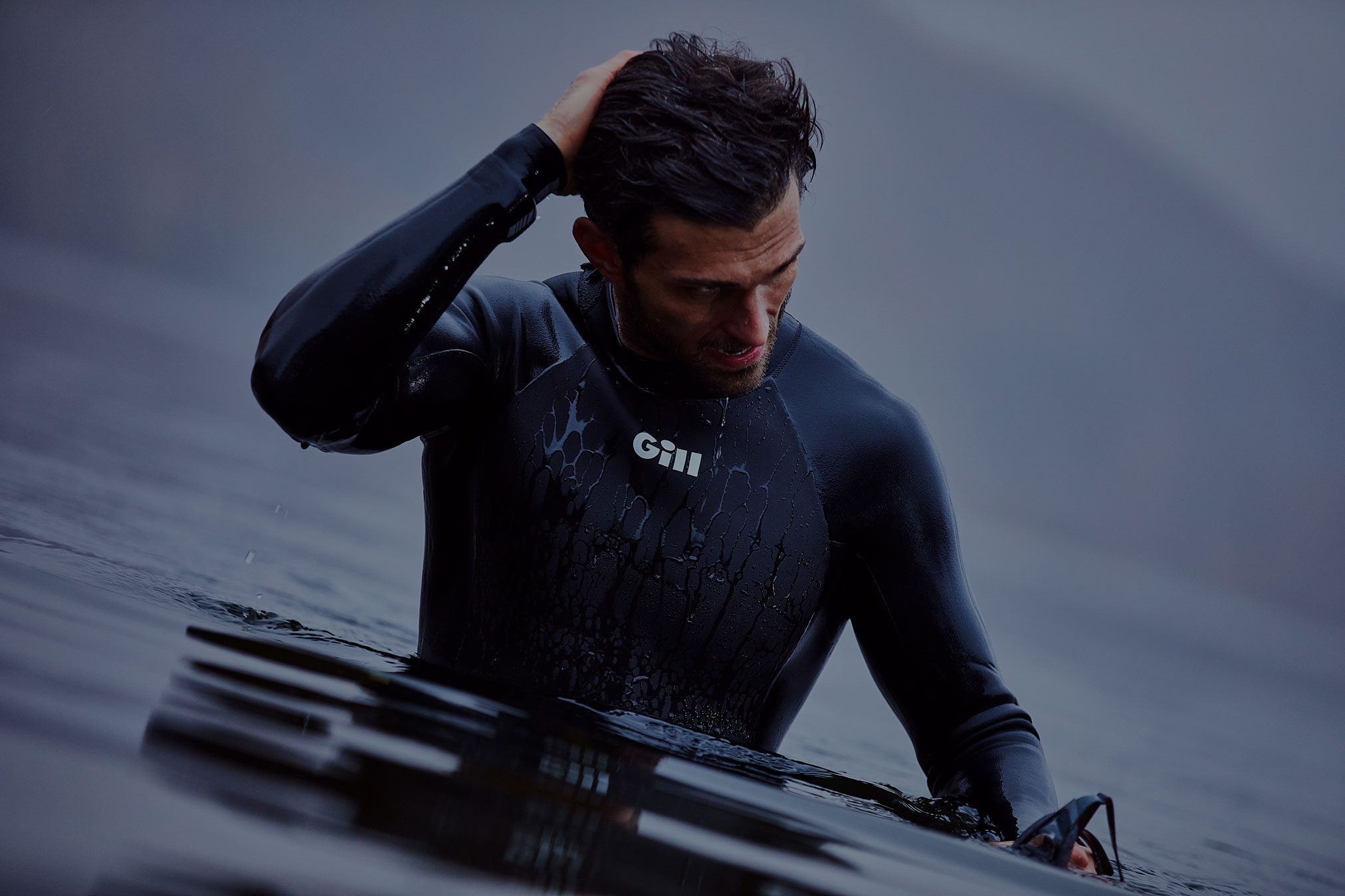Getting the chance to be out on or in the water is many people’s idea of a great day. The freedom and fun this brings is like nothing else. So whether you are a paddler, sailor or just an all-round lover of watersports, getting out on the water in comfort is important, especially in the colder months.
This is where wearing the right apparel for the cold comes into its own. Two popular options here are wetsuits and drysuits. But if you are new to watersports, or looking to try something different, knowing whether to choose a wetsuit or drysuit to wear can be tricky.
The latest Gill blog takes a look at the drysuit vs wetsuit question and gives you all the insight you need to make an educated decision about what to wear in the water.
Key Differences between wetsuits and drysuits

First things first – let’s pin down what differentiates a wetsuit from a drysuit. That’s what this blog is all about, so let’s get down to business!
Fundamentally, the design of a wetsuit and a drysuit differ in a pretty big way.
A wetsuit is a tight-fitting body suit where you can expect to get wet – hence the name! The way a wetsuit works is by letting a thin layer of water in, and then keeping this layer of water between your body and the fabric of the wetsuit itself. This layer of water then heats up and insulates your body against the colder temperatures of the water outside. Wetsuits are made with neoprene and tend to be stretchy and flexible so fit to the contours of your body.
A drysuit however is completely waterproof from the neck down and designed to not let any water seep through and onto your skin. They are a looser fit and will act more like a shell to protect against the water around you.
Drysuits have cuffs around the wrists and neck to prevent water coming through these gaps. Most will also have integrated thermal socks to protect your feet.

When to wear a wetsuit

Wetsuits are the perfect piece of attire for a number of watersports activities. As a general rule of thumb, anytime where you are going to be spending a fair amount of time actually in the water is a good time to wear a wetsuit.
This means surfing, wild swimming and stand up paddleboarding (if you think you’re going to fall in!) are activities where a wetsuit is advantageous.
Underneath you can wear a swimming suit and an optional rash guards to help to minimise chafing against your skin. When you come to fit your wetsuit, you should ensure that the fit is tight when you put it on!
When to wear a drysuit

Drysuits work best for activities where you are still likely to get wet but will be spending less time in the water.
Canoeing and kayaking are two of the most common activities where a drysuit is worn, particularly when the temperatures are cold outside.
One of the added benefits of wearing a drysuit in colder conditions is that layers can be worn underneath these items easily. We would recommend some moisture wicking base layers to ensure you stay comfortable. On the coldest days, you can layer up with a fleece or insulated layer and of course a hat and gloves!
Gill’s selection of wetsuits and drysuits

Now you understand some of the differences between wetsuits and drysuits, let’s take a look at what’s available to help you get outdoors with your watersports activities.
One of the most popular products in our range is the Pursuit Wetsuit. With thermal protection technology, a full arm design and zipped back, and made with 4/3mm zoned neoprene, this is a brilliant protective wetsuit that prioritises comfort and wearability.
Another option are our Dynamic Long Jane and John wetsuits. The Dynamic Long Jane is a brilliant women’s wetsuit, with a front zip and sleeveless design. This is a good option as a beginner wetsuit and has a 3mm neoprene fabric to offer that desired level of protection.

Equally, the Dynamic Long John is a strong choice for a men’s wetsuit. This wetsuit has a 4-way stretch fabric, front zip for easy access, 3mm neoprene protective fit and Di Guard abrasion resistant panels on the seat.

New to the Gill range is the Verso Drysuit. This product is made with XPLORE+® 3 layer fabric technology for a highly durable, breathable and waterproof finish and XPEL® fabric coating to repel water and stains. Find out more about our Verso Drysuit here.
Making the most of your purchase

If you do purchase a new wetsuit from Gill, then take a look at this guide on how to look after a neoprene wetsuit. Packed with tips, this is a must read for anybody keen to extend the life of their wetsuit and continue to reap its benefits for a very long time.
And if you are new to the wonderful world of watersports, we have a few tips for new paddlers to take a look at too.






